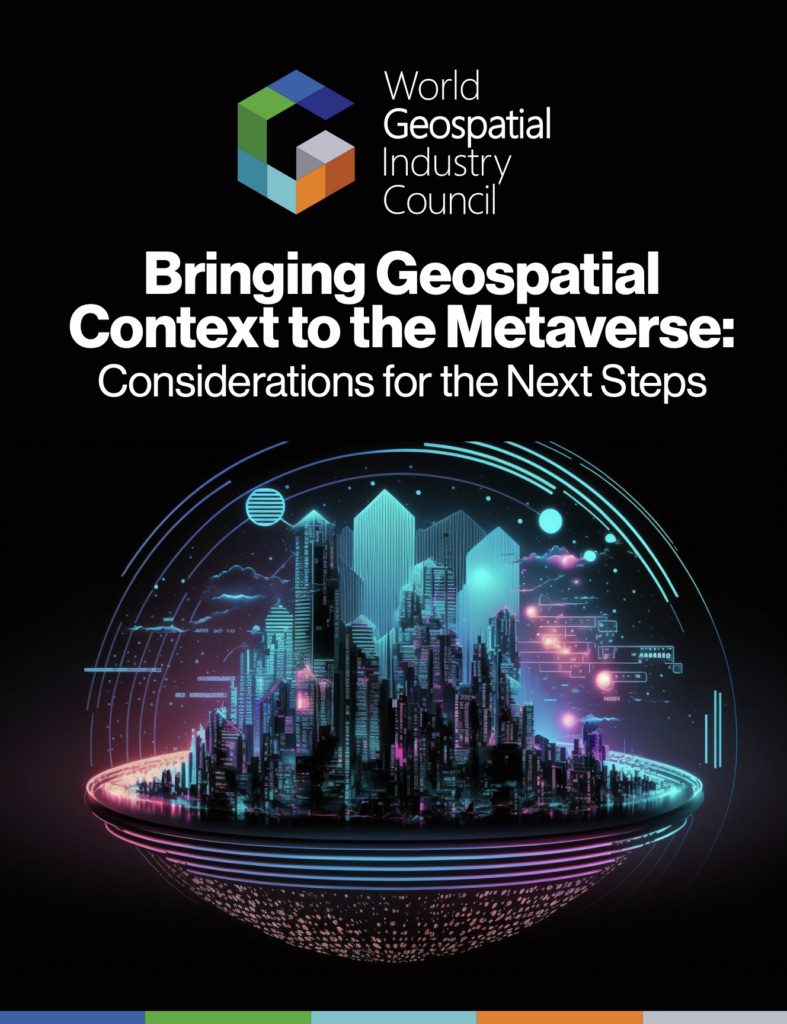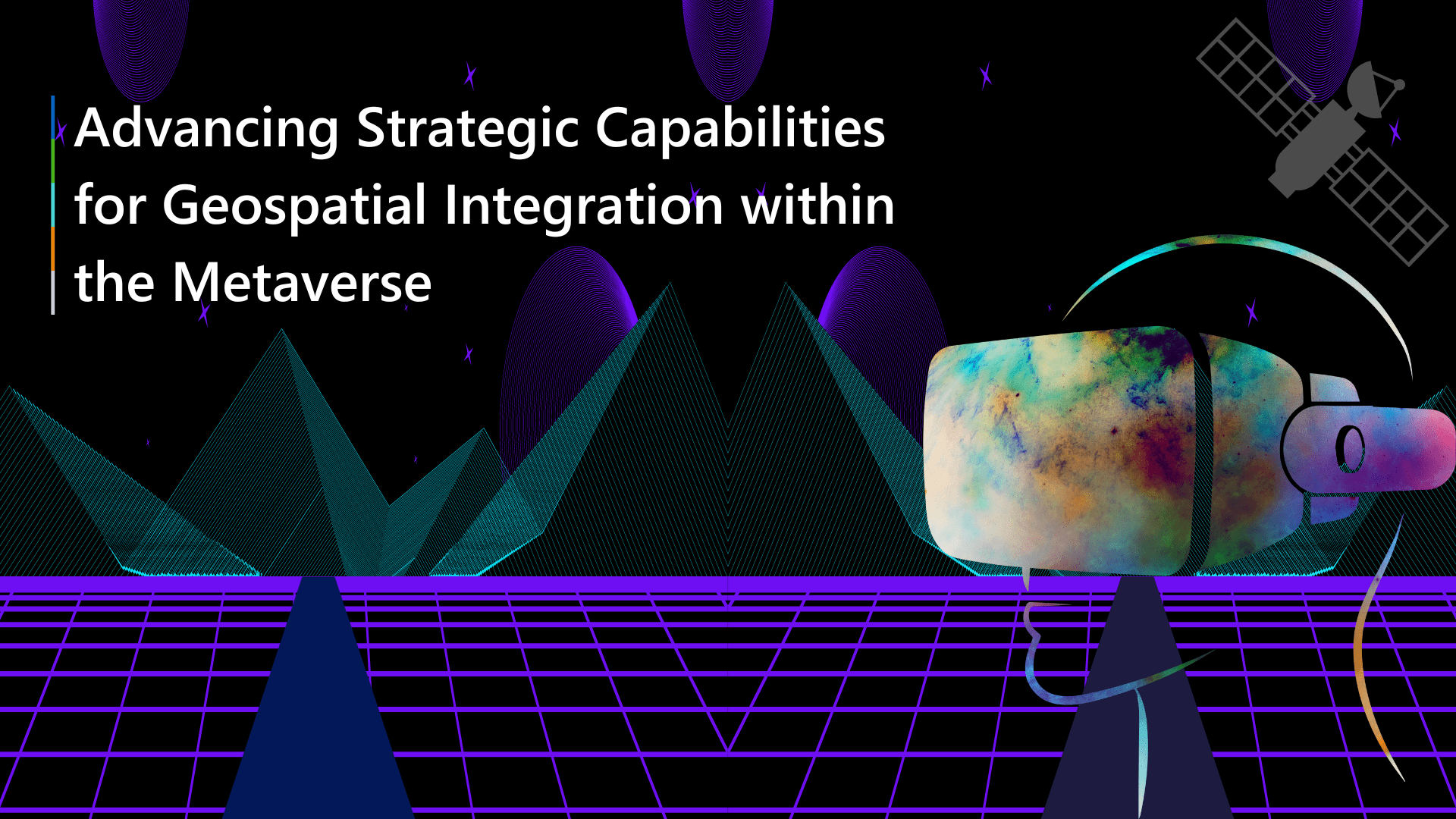Metaverse requires geospatial approaches, technology, and experience at its foundations. However, some milestones and challenges already exist or would arise during the construction of the geospatial foundations of the metaverse.
Several synergies exist between the geospatial domain and the metaverse, where the geospatial offerings naturally address the core needs of the metaverse formation. The WGIC’s report on the Metaverse outlines the experiences of WGIC member companies with their various products currently in the geospatial industry. These and other such products serve as the building blocks of the creator economy and spatial computing layers within the metaverse value chain.
Here are some of the existing capabilities of the geospatial industry along with the additional ground it needs to cover to build a compelling metaverse.
1. Online Presence Across Multiple Devices
✔Metaverse Requirement: The metaverse will be online and available on multiple platforms for users. It is now widely accepted that transitioning social and work interactions such as teaching, meetings, and retail from in-person to online and multiple platforms is possible and increasingly inevitable. Hybrid working is the new normal. Many critical services, such as health, banking, education, retail, judicial, and governance (at all levels of national/international administration), will continue to move online.
✔Geospatial Domain Offer: Due to their size and need for high performance, geospatial data and visualization technologies have traditionally been designed for reasonably powerful desktops (albeit increasingly hosted virtually on a cloud infrastructure) and increased network bandwidth platforms. However, the expertise in mobile geospatial technology (e.g., remote sensing, satellite-based field positioning, handheld field data capture devices/software) related to field operations will provide an excellent starting point for building geo-capable solutions in the metaverse.
2. Data and Technology for Real-time Multi-Player Productivity Scenarios
✔Metaverse Requirement: All interactions and data-sharing between multiple individuals in real time are essential aspects of the metaverse user experience.
✔Geospatial Domain Offer: Production scenarios that involve multiple editors/designers in the same or multiple organizations engaged in a singular activity (e.g., Building Information Modelling or BIM) of a new hospital or disconnecting editing and versioning) are relatively well-established in the geospatial industry. A separate chat-like application is used for real-time communication only between editors/and designers.
3. Real-time Interoperability on a Massive Scale
✔Metaverse Requirement: Real-world physical and non-physical systems (such as infrastructure, environment, atmosphere) in an ideal metaverse are supposed to be seamless at all geographical scales, thereby allowing a user to create a holistic view of the real world, from street level to global level, through a unified mechanism of command and control.
✔Geospatial Domain Offer: Several successful examples of real-time interoperability and required technology in interlinked geospatial systems exist in areas such as SDT, BIM, and integrated transport systems. When highly detailed, the geographical scales of these implementations are usually at the city or an individual entity (e.g., a building or bridge) level. The SDT implementations are generalized on smaller scales for larger systems (e.g., ocean, state, or country). Creating a constantly-evolving, geospatially-accurate virtual version of interlinked multi-scale real-world physical and non-physical systems is not viable with the existing geospatial technology. The data storage and complicated interactions would overwhelm the infrastructure. The geospatial domain resolves information overload issues by developing suitable generalizations that fit the intended purpose, e.g., London Underground Tube Map, BIM levels of detail, and sophisticated data compression technologies such as Enhanced Compression Wavelet (ECW), all of which could inspire equivalents in the metaverse.
4. User Control of Content and Creation
✔Metaverse Requirement: Web 3.0, i.e., increased user control on the creation and ownership of data, is one of the metaverse’s core and attractive features. This aspect is vital to allow trust, openness, collaboration, and creativity in the metaverse. However, enabling these goals will require addressing data quality, privacy, and ethical challenges.
✔Geospatial Domain Offer: Concepts such as neogeography (volunteered geographic information or VGI) and quantitative geography have addressed aspects of these subjects extensively. For example, the popular online mapping service OpenStreetMap was originally entirely produced by the contribution of GPS tracks by the public. Most policies based on census geography are based on a suitable aggregation of detailed private information from households.
5. Provision of Automation and Performance using AI/ML
✔Metaverse Requirement: The application of AI technologies to support the scale and complexity of interactions in the metaverse will include enabling the creation and maintenance of new user experiences, predicting and monitoring user behavior, data processing, and fully autonomous operation of complex industrial digital twins. For instance, based on generative AI, opus.ai has released demos that show the creation of 3D worlds using plain text. NVIDIA has released a no-code tool, Instant NeRF, that can create 3D assets using 2D photos and videos.
✔Geospatial Domain Offer: AI/ML technologies are used widely in the geospatial domain for various decision- making applications, e.g., pattern recognition in images, transport network analysis, and vehicle navigation.
6. 3D Content and Modeling for Virtual Worlds
✔ Metaverse Requirement: In the age of the metaverse, people will be able to see virtual reality in real-world surroundings (e.g., AR/XR/MR using HMD on a construction site), and they will be able to see the real world in a virtual world application (e.g., a detailed 3D model of real infrastructure fully accessible in VR). For the metaverse to be a believable proxy of the natural world, 3D modeling of all structural and functional aspects of real-world entities in natural and built environments will be required.
✔Geospatial Domain Offer: The geospatial domain has a long-established ecosystem in reality capturing for use in VR modeling and associated visualization software and hardware. This is evident in the widely available implementation of SDTs, e.g., the City of Victoria (Australia), and those in the making, e.g., XVRS of the NEOM (Kingdom of Saudi Arabia). The National Underground Asset Register project demonstrates how the information on a complicated network of underground assets (e.g., utilities) spread across an entire city can be accurately recorded as an SDT.
The metaverse has the potential to create new economic opportunities. Some creators and entrepreneurs within virtual worlds were generating substantial income, with top earners making millions of dollars in virtual transactions and sales.

Bringing Geospatial Context to the Metaverse: Considerations for the Next Steps Report
The policy report brings geospatial context to the metaverse and provides specific considerations for the next steps toward expanding the value proposition of geospatial technology. The report examines the opportunities and risks for the geospatial industry in the burgeoning commercial metaverse market, estimated to be several trillion dollars in the next two to three decades.



